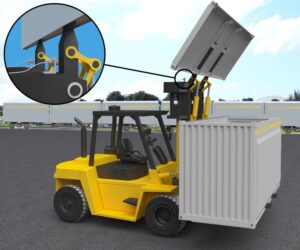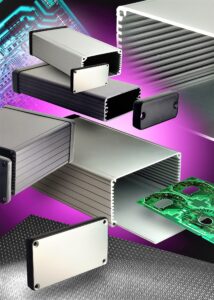BASF Leuna GmbH, a refiner of polyamide plastic, has chosen to use a colorSENSOR CFO200 non-contact colour recognition sensor and from Micro-Epsilon on its extruder line to detect the fluctuating colour values of plastic pellets.
The process of refining plastic at BASF Leuna involves extrusion and strand palletising. Different product groups are created, which must comply with a specific colour value depending on their specifications. In the event of a technical malfunction in the process, the colour values of the plastic pellets may change. The result is a product that does not meet specifications, which wastes money and energy.
The colorSENSOR CF200 controller and CFS2-M11 circular sensor are used to detect the fluctuating colour values of the pellets. The sensor measures the colour of the pellets through a sight glass in the suction box of the finished product conveyor and reliably detects the smallest colour deviations (ΔE < 0.6) from the programmed reference value. The recorded values can then be forwarded directly from the sensor to a higher level control system via a signal output.
As Michael Bergner, Asset Management Assistant at BASF Leuna GmbH comments: “Compared to a camera system for colour detection that was also tested, the CFO200 colour sensor is easier to implement and much more flexible in terms of configuration.”
True colour measurement solution
The colorSENSOR CFO200 colour recognition sensor from Micro-Epsilon is designed for high precision true colour measurement. The sensor stands out due to its high colour accuracy, good reproducibility, high measuring rate and modern communications interfaces for easier network integration. With a robust aluminium housing, the CFO200 operates in temperatures from -10°C to +55°C and is protected to IP65.
Using a modulated high power white light LED, the CFO200 colour sensor projects a white light spot via optical fibre onto the target surface to be inspected. Part of this light is back-scattered and directed onto a perceptive True Colour detector via the same optical fibre. This light is then refracted into long-, medium- and short-wavelength light components (X=long, Y=medium, Z=short) and transformed into L*a*b* colour values.
High colour accuracy (colour difference ΔE ≥ 0.6), good reproducibility (ΔE ≥ 0.3), high light power (>220 lm) and a fast measuring rate (up to 20kHz) enable the sensor to reliably detect the finest of colour graduations, even in high speed measurement tasks and on low reflecting surfaces. Equipped with optical fibres and focus lenses, the sensor can also be used in tasks where space is restricted, as the sensor head requires minimal space.
Gray-scale detection and high colour accuracy are combined with modern communications interfaces (Ethernet and RS232), as well as user-friendly operation and configuration via pushbuttons and a display. A multi-teach function enables up to 320 colours in 254 colour groups to be saved, as well as the teaching of reference colours and tolerances. Illumination, averaging and signal amplification are automatically adapted to the current measurement task.
The colorSENSOR CFO200 is suitable for a wide range of industrial applications including colour sorting tasks in food and beverage processing, colour inspection of interior parts in the automotive industry, recognition of colour marks in the printing industry, quality control in packaging, cosmetics, medicine and plastic products.
Ring illumination benefits
With the CFS2-M11 circular sensor, the light emitted by the controller is sent as an illuminated ring at an angle (either 11° or 34°) to the surface of the object to be tested. The diffuse back reflection (surface colour) of the sample is detected by the sensor at 0° (parallel) to the surface and transmitted to the controller via an optical fibre. The ring illumination makes it possible to detect the diffuse colour reflex regardless of structure or reflection. The sensors are available with different illumination angles and different spot sizes. Therefore, it is possible to measure colours with a repeatability of ΔE ≤ 0.3 in relative terms up to a working distance of 100 mm. Other sheaths and cable lengths are optionally available. Combined with the high performance of the colorSENSOR CFO series, the ring illumination provides even more precision due to uniform illumination. This compact combination can be used universally but is also suitable for special, customer-specific solutions. The homogeneous illumination offers advantages on strongly structured or shiny-metallic surfaces, while providing the highest precision when distinguishing the colour of different shades of white.
For more information on the colorSENSOR CFO200 colour sensor from Micro-Epsilon, please visit www.micro-epsilon.co.uk or call the Micro-Epsilon sales department on +44 (0)151 355 6070 or email mailto:info@micro-epsilon.co.uk

 Instrumentation Monthly Test | Measurement | Control
Instrumentation Monthly Test | Measurement | Control










